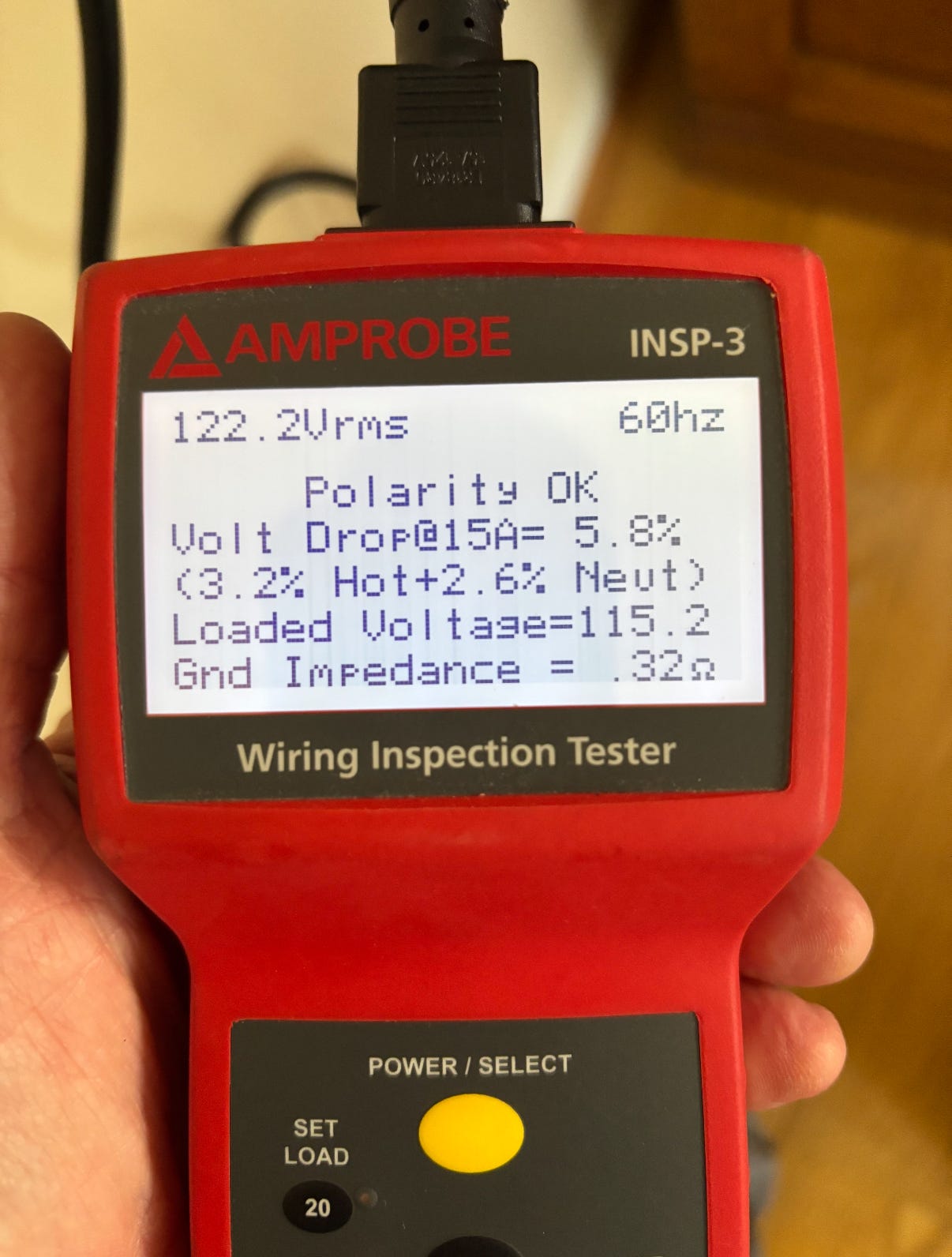Don’t Fuse a Bonding Plug!
EGC (Equipment Grounding Conductor) Fault Current Paths are there for a reason…
A question from my Facebook Group
Hey Mike,
Your thoughts on these generator bonding plugs. The neutral/ground bond is fused? .... I am seeing online neutral-ground bonding plugs that have 15amp fuses incorporated. That seems ill advised to me. I wouldn’t want the fuse on the ground to blow and lose the protection if it were ever called upon. All hot circuits are fused. So why are they adding a fuse in their G-N plugs? - Richard
Hey Richard,
Thanks for the question. Adding a fuse to a generator G/N bonding plug is unnecessary and possibly a code violation. Around 100 years ago they used to fuse neutral conductors, but the dangerous conditions caused by neutral fuses blowing eliminated that practice. The same logic holds for neutral/ground bonds. As you noted, there’s no good reason for a fused neutral/ground bond, and lots of reasons not to fuse it.
Measure it
Here’s what the impedance of the EGC bonding path should look like.
The 0.32 ohm Ground Impedance shown above provides a fault current path with potentially hundreds of amperes of current. That current will quickly trip any Over Current Protection Device (Circuit Breakers) in the event of a short-circuit to the chassis. If that occurs, you don’t want a fuse in the EGC bonding path to open up. In a power company service that could allow anything plugged into that circuit to develop a hot-skin voltage.
Note a G/N bonding plug is only needed on a portable generator. That’s because generator bonding is a bit different from utility service since it’s a Separately Derived System that’s isolated from the earth so it can’t create a hot-skin voltage. But a fused ground/neutral bond on a generator is still a bad idea since it can shut down an EMS Surge Protector if it opens up.
Please post your questions and comments below… Mike








